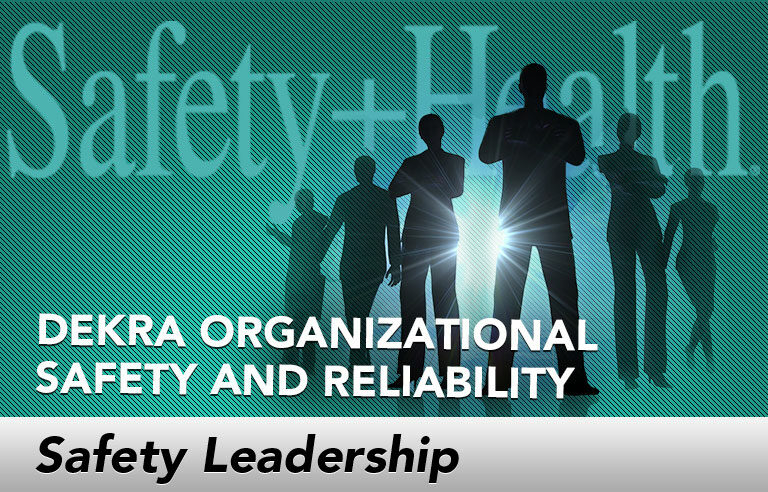Safety Leadership: Decision-making and safer outcomes

Editor’s Note: Achieving and sustaining an injury-free workplace demands strong leadership. In this monthly column, experts from global consulting firm DEKRA Insight share their point of view on what leaders need to know to guide their organizations to safety excellence.
Sometimes a single decision can make the difference between going home safe and not. We’re good at identifying a single poor decision (for example, failure to alert the next shift of an offline pump or missing a specific step in a complicated procedure), but few understand what it takes to make a safe decision. Advances in human factors, technology and neuroscience are changing that. The challenge is understanding what safe decision-making looks like and how to develop and deploy it systematically.
Choosing safety
By some estimates, the average adult makes upward of 35,000 decisions a day. Many decisions are relatively low risk, even trivial – what to eat for breakfast or how to respond to a social request. But the potential outcomes of some decisions can have serious, even life-altering, effects. Consider the stakes of:
- A tanker truck driver who sees he is at his exit sooner than expected and must make a split-second decision
- An employee who must decide whether to continue work with a guard missing
- A manager deciding whether to continue operating a piece of equipment with safety devices bypassed or compromised
- A new employee who sees a crucial safety step overlooked and must decide whether to speak up to his more experienced co-worker
Humans tend to choose the best they know how. But as author Jim Collins once noted, “bad decisions made with good intentions are still bad decisions.” It’s up to leaders to equip workers with the knowledge, skills, tools and environment to consistently make the choice that reduces exposure for themselves and others.
Rules of engagement
Although the idea of systematically improving individual (and team) decision-making is still evolving, our experience suggests that leaders proceed with four principles in mind:
Even good people make bad decisions. Poor decisions are not a reflection of character. But when we’re trained to look only at the immediate decision, we do a disservice to the employee (who is often blamed) as well as the organization (which fails to recognize and remedy root causes). Approaching decision-making as a system issue will help you avoid the negative cycle of blame and ignorance.
Data is just a starting point. Recordkeeping tends to be centered on where things go wrong. Leaders should expect little, if any, information around decisions where the outcome was considered “successful” (i.e., nothing bad happened) or that genuinely controlled or eliminated the exposure. Treat available data as a helpful guide, not a comprehensive catalogue.
All decisions have context. Just about every non-mechanical incident can be traced back to one of three risk decisions. Each decision is the artifact of any number of precursors, including but not limited to biases, conditions, culture, fatigue, systems and training. The three risk decisions are not following a procedure/technique, not recognizing an exposure or a change in the exposure, and making a flawed decision in which the situation calls for judgment and/or there are no procedures or previous experience.
Decision-making is part of a bigger ecosystem. Like other advancements, enhanced decision-making must be a supplement to existing risk reduction systems, not a replacement for them or a way to push off responsibility to workers.
Improving the quality of decision-making is a team effort. A single worker with the right knowledge and approach can start making safer decisions; however, dramatically increasing the level of safe decision-making requires support from our leaders and peers. Organizations need to understand all the influences on decision-making and be open to the fact that their individual actions, organizational culture and systems may be barriers to safe decision-making. Finally, there needs to be active learning and practicing of new techniques that lead to safer decisions.
This article represents the views of the author and should not be construed as a National Safety Council endorsement.
 Don Groover, CIH (ret), CSP, is senior vice president with DEKRA Insight. Groover develops solutions that leverage the latest technology and advancements to improve safety performance in client organizations.
Don Groover, CIH (ret), CSP, is senior vice president with DEKRA Insight. Groover develops solutions that leverage the latest technology and advancements to improve safety performance in client organizations.
Direct to your inbox: Sign up to be notified in email about new Safety Leadership columns.
Post a comment to this article
Safety+Health welcomes comments that promote respectful dialogue. Please stay on topic. Comments that contain personal attacks, profanity or abusive language – or those aggressively promoting products or services – will be removed. We reserve the right to determine which comments violate our comment policy. (Anonymous comments are welcome; merely skip the “name” field in the comment box. An email address is required but will not be included with your comment.)

